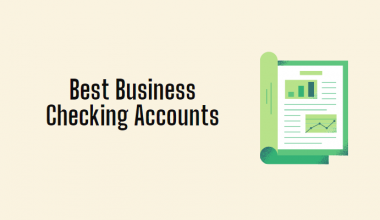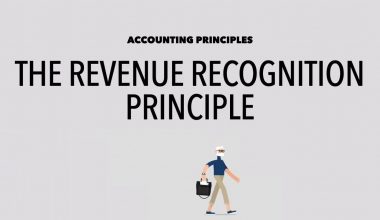Businesses track and maintain their inventories in order to have a ready supply of items to meet their customers’ demands. They can keep track of these commodities and ensure they have enough stock for effective manufacturing and sales by employing inventory accounting. Understanding how to record these assets in an accounting system and ensure they suit the needs of consumers can assist an organization in being organized and productive.
What Is Inventory?
The term inventory refers to both the raw materials utilized in production and the finished commodities that are ready for sale. Inventory is one of a company’s most valuable assets because inventory turnover is one of the key sources of revenue production and subsequent earnings for the company’s shareholders. Raw materials, work-in-progress, and finished goods are the three forms of inventory. On a company’s balance sheet, it is classified as a current asset.
Types Of Inventory
Inventory is often divided into three categories: raw materials, work-in-progress, and finished goods. The IRS defines items and supplies as extra inventory categories.
Raw materials are unprocessed materials that are utilized to make a product. Raw materials include, for example:
- Aluminum and steel for the manufacture of cars
- Flour for bakeries that produce bread
- Crude oil held by refineries
Work-in-progress inventory refers to partially finished goods that are awaiting completion and resale. WIP inventory is often referred to as production floor inventory. A partially built airplane or a partially completed boat is frequently considered work-in-progress inventory.
Finished goods are things that have completed the manufacturing process and are ready for sale. Retailers sometimes refer to this inventory as merchandise. Common examples of goods that shops own include clothing, electronics, and automobiles.
What Is Inventory Management?
Inventory management assists businesses in determining which and how much merchandise to order at what time. It keeps track of merchandise from purchase to sale. The technique identifies and responds to trends to guarantee that there is always enough stock to fulfill client orders and that a shortfall is properly announced.
Inventory becomes revenue if it is sold. Inventory (although represented as an asset on the balance sheet) ties up cash before it is sold. As a result, having too much stock costs money and lowers cash flow.
Inventory turnover is one indicator of good inventory management. Inventory turnover is an accounting metric that represents how frequently stock is sold at a given time. A company does not desire more inventory than sales. Inadequate inventory turnover can result in deadstock or unsold stock.
Why Is Inventory Management Important?
Inventory management is critical to the health of a business since it ensures that there is rarely too many or too few goods on hand, reducing the danger of stockouts and erroneous records.
Public corporations require invetory tracking to comply with Securities and Exchange Commission (SEC) requirements and the Sarbanes-Oxley (SOX) Act. Companies must document their management practices in order to demonstrate compliance.
Pros Of Inventory Management
Inventory management has two primary benefits: it assures that you can fulfill incoming or open orders and it increases earnings. Inventory management also includes:
#1. Saves Money
Understanding stock trends involves knowing how much and where you have something in stock so you can make better use of what you have. This also allows you to hold less stock at each location (store, warehouse) because you may pull from anywhere to fulfill requests; all of this reduces inventory costs and the amount of product that goes unsold before it becomes obsolete.
#2. Increases Cash Flow
You spend money on merchandise that sells when you use proper inventory management, so cash is always moving through the business.
#3. Customer satisfaction
One aspect of cultivating loyal clients is ensuring that they obtain the things they desire without having to wait.
Cons of Inventory Management
The key inventory management issues are having too much inventory and not being able to sell it, not having enough inventory to fulfill requests, and not knowing what things you have in inventory and where you can find them. Other challenges include:
#1. Obtaining Correct Stock Information
There is no way to determine when to refill stock or which stock trades well unless you have the correct stock details.
#2. Process flaws
Outdated or manual processes might lead to errors and delayed operations.
#3. Customer Demand Variation
Customer preferences and needs are continuously shifting. How will you know when and why their preferences change if your system cannot track trends?
#4. Making Good Use of Warehouse Space
If similar products are difficult to find, employees lose time. Mastering inventory management can help you overcome this difficulty.
What is an Inventory Management System?
An inventory management system (also known as an inventory system) is the process of tracking your goods across your whole supply chain, from purchasing to manufacturing to final sales. It regulates how your company approaches inventory management.
Why Do You Need An Inventory Management System?
Any business that handles stock will require a system to track and control it accurately. Without one, you’ll be working purely ad hoc, and you’ll quickly find yourself in situations where your company is overstocked or understocked.
Inventory systems inform you how many components or materials you’ll need to make or assemble your final product. You may wind up with surplus stock, eroding your bottom line, or inadequate stock to meet client demand if you do not have this information.
However, while you will require an inventory management system, the one you select is totally up to you. There are numerous methods to choose from, ranging from simple approaches to full solutions.
Periodic vs. Perpetual Inventory Management Systems
There are two types of inventory management systems: periodic systems and perpetual systems. Let us examine the distinction between the two.
What is Periodic Inventory?
Periodic inventory is a method of stock management that is fully based on stocktaking. Businesses that use a periodic approach count their stock on a regular basis—say, every 3 to 6 months—to ensure stock accuracy and to see if stock levels match sales data.
What Is Perpetual Inventory?
Perpetual inventory is a system that tracks stock levels while items are received, manufactured, sold, or returned to the business. Continuous inventory systems typically provide the most up-to-date inventory figures, with less reliance on stock takes for accuracy.
Types of Perpetual Inventory Management Systems
Spreadsheet Inventory management
Many firms follow Carlos’ lead and begin using Excel; it can be a great tool to manage inventories on a small scale. However, there are a few drawbacks to this. When utilizing spreadsheets, human errors, for example, can quickly snowball into costly difficulties. Furthermore, flexibility and accuracy are frequently difficult to come by.
Spreadsheets are inexpensive, simple to set up, and suitable for small businesses. However, if the spreadsheet fails, your inventory management system fails as well. And if your company grows in complexity, it will quickly become unwieldy.
Basic inventory management software
Many cloud-based programs have basic inventory management features. While not as thorough as dedicated inventory software, it is a natural progression from spreadsheets for many. However, you may discover that spreadsheets are still required to meet your specific needs.
Dedicated inventory management software
Stock management software is designed primarily to assist you in tracking and controlling stock. If the program is cloud-based, you’ll be able to combine it with other cloud applications (Unleashed, for example, integrates with Xero, QuickBooks, Amazon, Shopify, Vend, and hundreds of other apps) and access your data from anywhere, at any time.
Enterprise resource planning systems
Instead of purchasing various cloud components that interface with each other, enterprise resource planning (ERP) allows you to purchase a single system that covers all aspects of company planning. This usually entails selecting and installing the modules that you require, such as inventory management.
What Is Inventory Accounting?
Inventory accounting is the valuation of inventoried products that have not yet been sold to customers by a business. A company’s inventory can include items, raw materials, and other things that it buys, manufactures, and stores to sell to its consumers. The goods in the inventory are part of the organization’s assets. In a balance sheet report, businesses include their inventories as current assets at the prices at which they were purchased. Companies can delete the inventory’s cost entry from the inventory account and make entries in the cost of goods sold and product revenue accounts once it has been sold. A company’s ability to make money is usually related to its inventory. As a result, it must be monitored and kept in balance.
What is the Importance of Inventory Accounting?
Inventory accounting is critical for firms since it assists them in determining their financial status. Accurate inventory accounting may also aid in the improvement of their manufacturing process, the facilitation of product sales, and the planning of product shipments to clients. Many firms utilize inventory accounting software and computerized tracking systems, which makes it easier to keep up with the constant changes that occur with inventories when businesses add new products, sell existing items, and delete obsolete items.
Overstocking can have a negative impact on a company’s cash flow. Storage charges and storage insurance may further add to the company’s expenses. If the inventory is not kept on the company’s premises, transportation charges may be incurred. However, if the company has too little inventory, it may not have enough goods to match client demand and may lose sales and customers as a result. This implies that an efficient and convenient inventory valuation approach is required to assist a corporation in improving inventory management.
What Are Inventory Accounting Methods?
Most organizations use one of four strategies to evaluate their inventory:
Specific identification: This system tracks each individual inventory item by its RFID tag, serial number, or stamped receipt date from the time it is added to a company’s inventory until it is sold. Businesses typically use this method of valuation for high-value, large, and obvious objects.
First-in, first-out (FIFO): This valuation method presumes that the first thing received in the business inventory will be the first item sold. Businesses primarily use it to track food, medication, and other perishable supplies.
Last-in, first-out (LIFO): This valuation method predicts that a corporation will sell the most recent things in its inventory first, followed by older products. Businesses dislike the LIFO approach since older things in inventory have a lesser probability of finding buyers, and they may only utilize it if the prices of items are projected to rise.
Weighted average cost: This strategy is used by businesses to value similar units that can be difficult to distinguish and track cost-wise on an individual basis. The weighted average cost of each unit is calculated by dividing the total cost of products in inventory by the total number of units.
What Should Inventory Accounting Include?
Here’s what most businesses incorporate in their inventory accounting:
#1. Raw materials
Raw materials are the components required by the company to make its products. A chocolate-making company, for example, may keep an inventory of the raw materials it uses as ingredients, such as sugar, cocoa, and butter. Alternatively, an oil business can list the crude oil it purchases from its sources.
#2. Work-in-progress goods
A company uses its components and raw materials to create work-in-progress goods. A fashion company, for example, may keep partially finished dresses, shoes, and other accessories in their work-in-progress inventory. This enables firms to track how their materials are being used and tasks that professionals have not yet completed.
#3. Finished products
Finished goods are items that are ready for sale to clients. Subsection inventories of completed goods include transportation inventory, buffer inventory, anticipation inventory, decoupling inventory, and cycle inventory. These inventories assist businesses in maintaining accurate records of items as they transfer them from one business to another for sale.
#4. MRO goods
MRO goods are supplies for maintenance, repair, and operation. This could comprise a company’s industrial equipment, computers, and other items needed to run. These resources, however, are not part of the finished items they are producing.
#5. Resale items
Customers may return resale items for a variety of reasons. These items are in excellent enough shape for resale, so the corporation can still profit from them. These are distinct from damaged items or products returned by customers that the company is unable to resell.
Benefits of Inventory Accounting
- Allows businesses to know what types of commodities they have in stock and how many of each, as well as assign an exact value to their inventory.
- Allows businesses to examine which products are purchased the most frequently by clients and which things sell the most.
- Can assist firms in determining the cost of products sold and the cost of unsold goods at the conclusion of each fiscal year. They can then compare the figures to see how productive and successful their company has been.
What Are The 4 Main Types Of Inventory?
Raw Materials, Work-In-Process (WIP), Finished Goods, and Maintenance, Repair, and Overhaul (MRO) are the four most frequent categories of inventory. When you know what kind of inventory you have, you can practice better inventory control and wiser inventory management.
What are the Functions Of Inventory?
Inventory serves several important tasks in supply chain management, including initial purchase (raw material or products for resale) storage, usually in warehouses until needed for manufacturing or resale to customers.
Is Inventory An Asset Or Liability?
Inventory is classified as an asset in accounting. It is classified as a current asset on the balance sheet since enterprises often utilize, sell, or replenish it in less than a year.
What’s The Difference Between Inventory And Stock?
In summary, stock is the quantity of finished things that are available for sale, whereas inventory includes both finished goods and components that go into making a finished product. In other words, all inventory is stock, but not all stock is inventory.
Conclusion
Inventory supplies materials for firms to keep their operations running. This covers any raw materials used in the manufacture of goods and services, as well as any final commodities sold to consumers on the market by businesses. Inventory management and establishing the turnover rate can assist businesses in understanding how successful they are and where they can pick up the slack when earnings begin to dry up.
- EFFECTIVE INVENTORY MANAGEMENT: Guide To Do It 2023
- BEST APPS FOR INVENTORY MANAGEMENT IN 2023
- SIMPLE INVENTORY MANAGEMENT: System, Services, Software and More
- STOCK INVENTORY MANAGEMENT: What It Is, Types & Benefits






